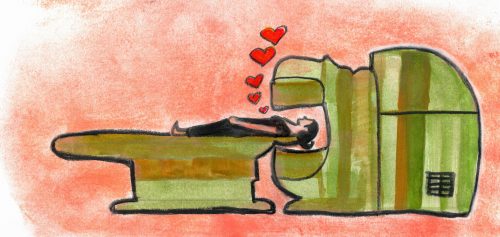Art by Noora Said.
From morphine to ibuprofen, modern medicine has made enormous progress in the field of pain management. However, a recent study conducted by Professor Xiaofei Xie’s lab at Peking University showed that medicine might not be the only means by which we can attain pain relief. The proposed alternative? Helping others.
Why do people help others? The question has plagued scientists for centuries—after all, altruism is a costly behavior. The researchers’ study sought to address this paradox. “Our experiments suggest that altruism is not just other-benefiting, but it benefits the performers as well,” said Yilu Wang, lead author of the study. According to their results, a key benefit is pain relief.
In order to get a deeper understanding into how altruism affects our biology, the authors conducted three experiments that placed individuals in either altruistic or non-altruistic roles, then either induced pain or measured naturally existing pain. In one of these experiments, the researchers used functional MRI (fMRI) to measure how brain activity changed after participants performed the altruistic task of donating money to orphans. The fMRI results showed that those who had donated money exhibited decreased activity in the right insula, the area of the brain responsible for feeling pain.
Thus, performing altruistic behaviors regularly can serve as a “low-cost, side effect-free approach to supplement current therapies for chronic pain,” Wang and Xie said. Their research not only sheds light on different psychological and biological motivations behind our behaviors but may also provide insight into a new method for pain management.
Source:
Wang, Y., Ge, J., Zhang, H., Wang, H., & Xie, X. (2020). Altruistic behaviors relieve physical pain. Proceedings of the National Academy of Sciences, 117(2), 950-958.

